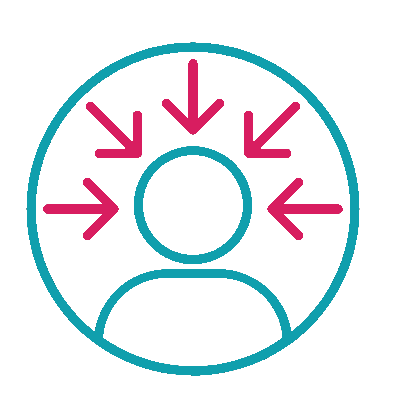If digital is your niche, you’ve probably been part of a website redesign process at some point in your career. There are many success stories – yet at the same time there’s ample evidence to show a redesign can go horribly wrong. You might remember Marks and Spencer investing two years of time and £150m to improve the website user experience. The result? In the first quarter after launching, the company witnessed an 8.1% drop in sales which the CEO attributed to the new website launch.
Common redesign pitfalls
Taking on a website redesign is a huge investment in time and resource, and with that, a high level of risk if it doesn’t work as expected. In our experience, the most progressive companies are following a data-led, customer centric approach about what to keep and what to change. The number of companies taking this approach is growing as companies adopt digital into more parts of their business.
However, this hasn’t always been the case. Many companies in the past have followed a common cycle when choosing how to redesign their website. Invest a large amount of time/resource to build a website and feel it’s “done”, then a few years later realise things aren’t working anymore and the motivation is back to undertake a full redesign. Often this motivation to redesign is triggered by two common scenarios:
- The business is going through a ‘digital transformation’ or moving to a new CMS and the opportunity to update the website at the same time makes sense
- The feedback that everyone gives about the website is that it’s outdated and competitor websites look ‘more appealing’
A customer centric approach

As a data driven specialist in the area of Conversion Rate Optimisation, it’s exciting to see that Digital has evolved over the past few years, and the more progressive companies understand that design-led redesigns can backfire. They have now started to grasp the importance of including conversion focused minds that base decisions on data and customer insights, rather than opinions.
To increase the chances of a website being effective, the best redesign approach is to follow a process of discovery, elimination and key element determination. A website redesign process involves many decisions on whether or not to change elements such as: should we change our value proposition messaging? Should we change the navigation? Should we change the application form…? Instead of using opinions to inform the ‘should we’ questions, the best option is to use customer insights to inform these questions instead. This then helps to build an understanding of two things:
- What visitors are currently doing on the website – the ‘What’
- Why customers are behaving in the current way – the ‘Why’
What are customers doing on your site?
Firstly, understanding the ‘What’, by digging into the data, is crucial to understand which elements of the website are working, and which elements aren’t. Without data, there is no way of knowing what to change and what to keep in the redesign. Two recommended methods of understanding ‘the what’ are:
 Analytics:
Analytics:
Analytics is your informed marketers first point of call. Use analytics to understand where visitors are landing on the website, where they’re navigating to and where they’re dropping off. Get as many insights from your data as possible. The insights gathered from the analysis can be used to focus your qualitative efforts and understand what is working (are therefore should stay) and what is not working (and therefore needs attention).

Heatmaps and scroll maps:
Run heatmaps and scrollmaps to find out how visitors are behaving. Are they scrolling down to read all the content on the website? Are they clicking on the things you think are important? Are they clicking on things that aren’t clickable
OK, got it. Now why are your customers behaving this way?
Understanding the ‘Why’, through qualitative research, is another important step to reduce the subjectivity of what to change on the website. As mentioned, there is a common trend for redesigns to fall into the hands of what designers want to do, instead of what customers want. The more customer input that is used to inform the website redesign, the less risk that customers won’t convert when the new website is live.
At a minimum, we recommend considering the following methods of qualitative research to support your decision making:


User testing:
Run remote or in-person user tests to watch prospective customers carry out common website tasks e.g. make a purchase/application. Getting the same participants to carry out the same task on a competitor website can uncover valuable insights.

On-site surveys:
Launch on-site surveys on confirmation pages or landing pages to understand why visitors made a purchase or what’s holding them back. The insights received are from from visitors ‘in the moment’ when their emotional brain is not clouded by rational post-purchase judgement

Heuristic analysis:
Although it’s not specifically from actual customers, there is a place for insights informed by heuristic frameworks to identify common user experience issues
Wireframes before design

The next step of the process is to build wireframes that are based on the summarised quantitative and qualitative insights. The wireframes should clearly communicate the content and approach of the key website pages. A common scenario that we see when design comes before wireframes is that companies are left in a difficult position of fitting copy into a design template. A client knows through research what motivates customers to purchase from them, but they are stuck with too much or too little room to communicate it. e.g. ‘Client: we have 5 USPs we know set us apart, but our new design only allows for three bullet points, and we are limited to 13 characters per line/point.‘
Continually evolve the website
In our opinion, following this process offers the best chance of success in a website redesign. Once the dust has settled and the new website is live, a perfect opportunity presents itself to break out of the build, wait and redesign cycle by instead acknowledging the site as living and worthy of ongoing attention. Once a strong basis is created, an ongoing programme of testing and validation is recommended to continue the optimisation process. A website is therefore never ‘done’ and is continuously evolving.
Conversion rate optimisation is also a process that can help to future proof the business offering. For example, a ‘smoke test’ can help to validate if a tool/functionality will help visitors to convert e.g. I bet more visitor would apply if we offered a comparison tool. Save time and investment by running a test to validate if visitors to your website will actually use it e.g. introduce a ‘Need a help comparing’ CTA, then invest resource if there is a demand.
So here we go. Website redesigns are something we see happening everyday in the industry and we aspire to be a source of inspiration for these to work to their full potential. Hopefully, if you are in a position in the near future where a website redesign is on the cards, this article inspires you to take a data driven, customer centric approach to reduce the risk of a website redesign going wrong. Your accountant will certainly love you for it.
Do you want to know more about this topic? We support companies in their redesigns, contact our conversion rate optimisation specialists today for more information or questions.

